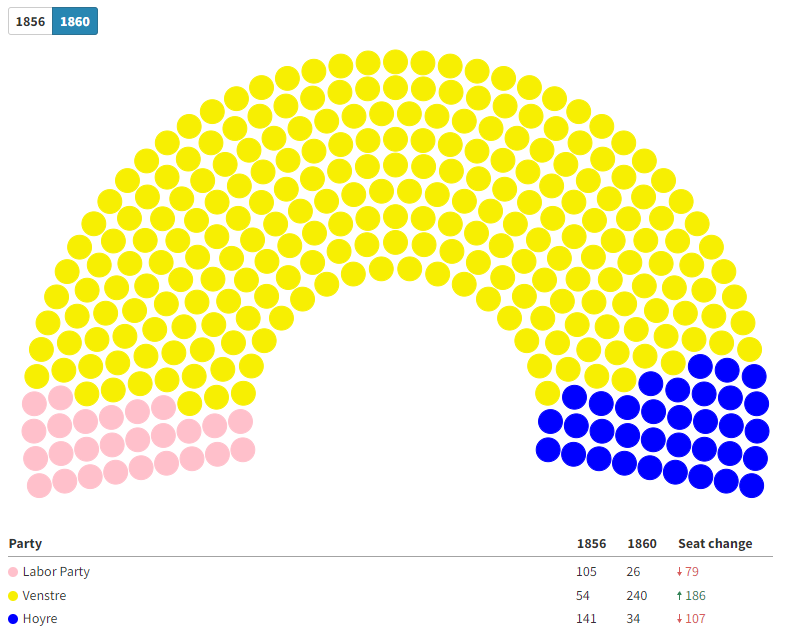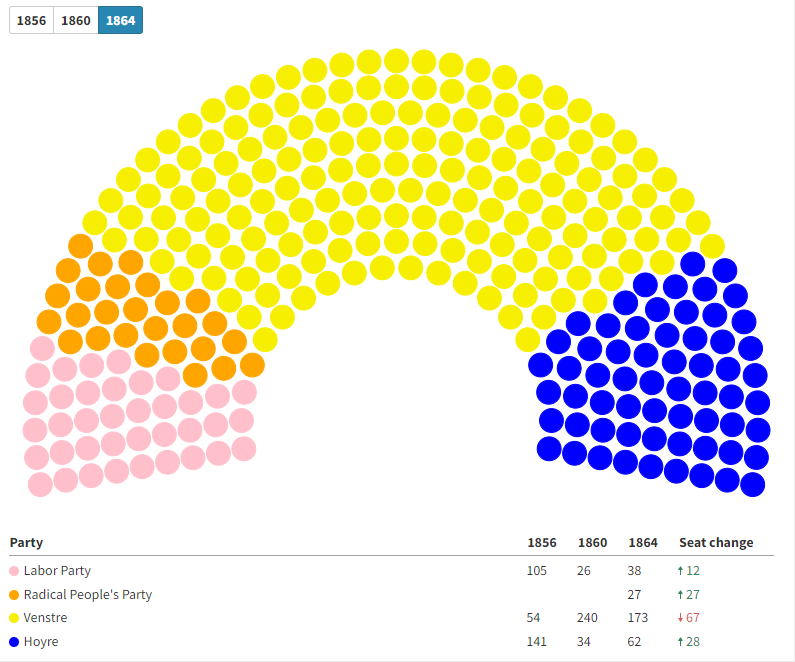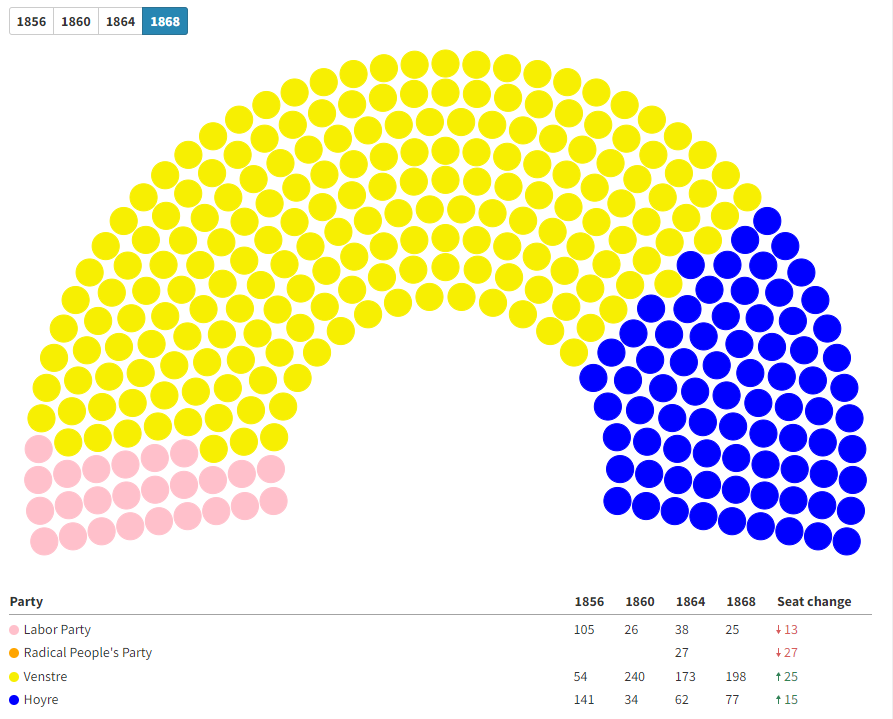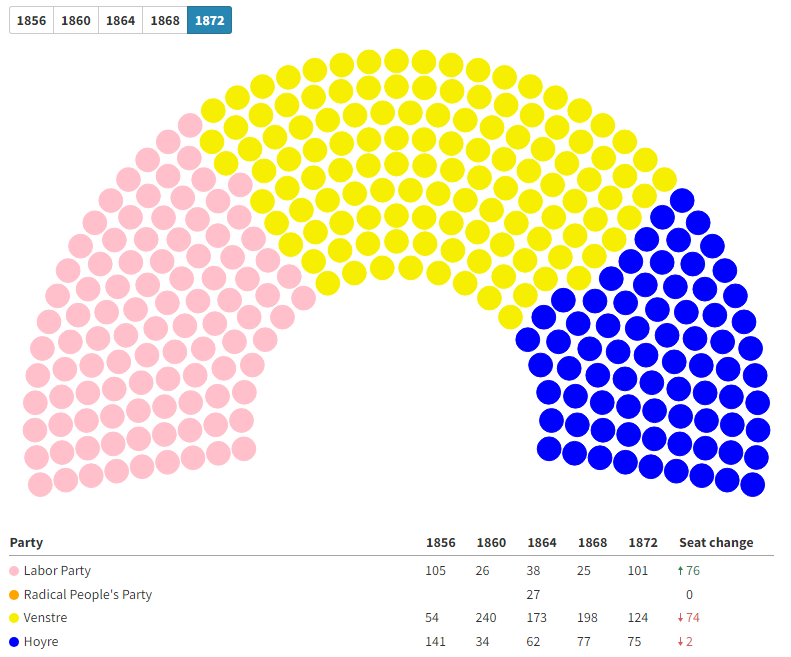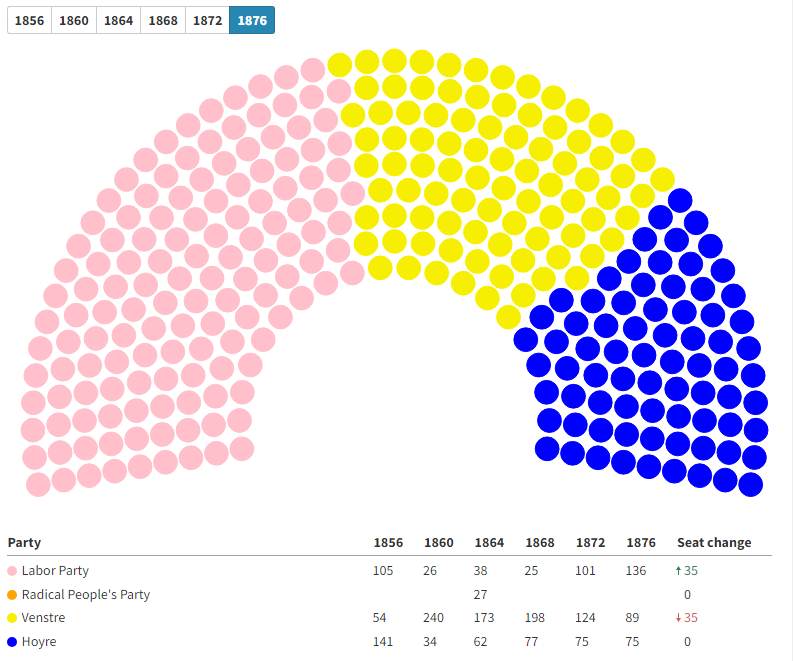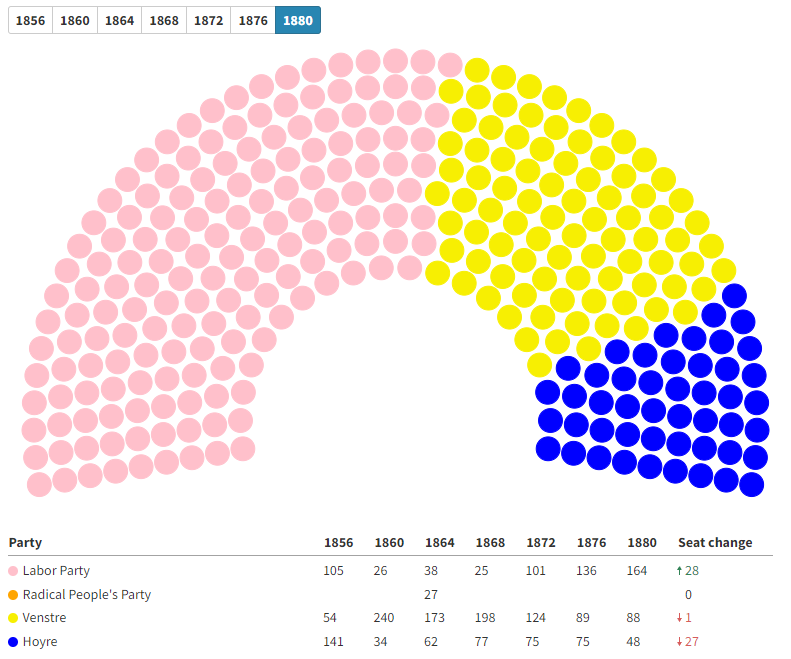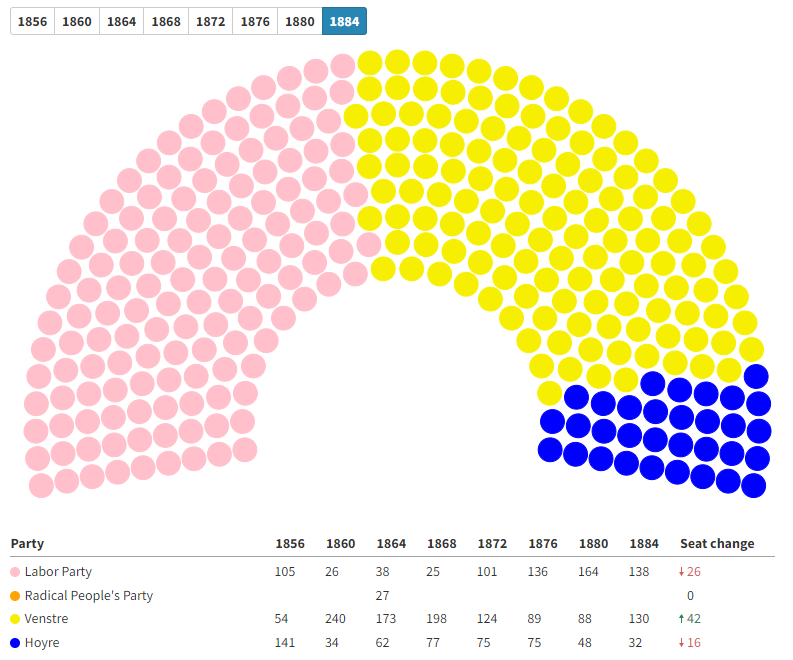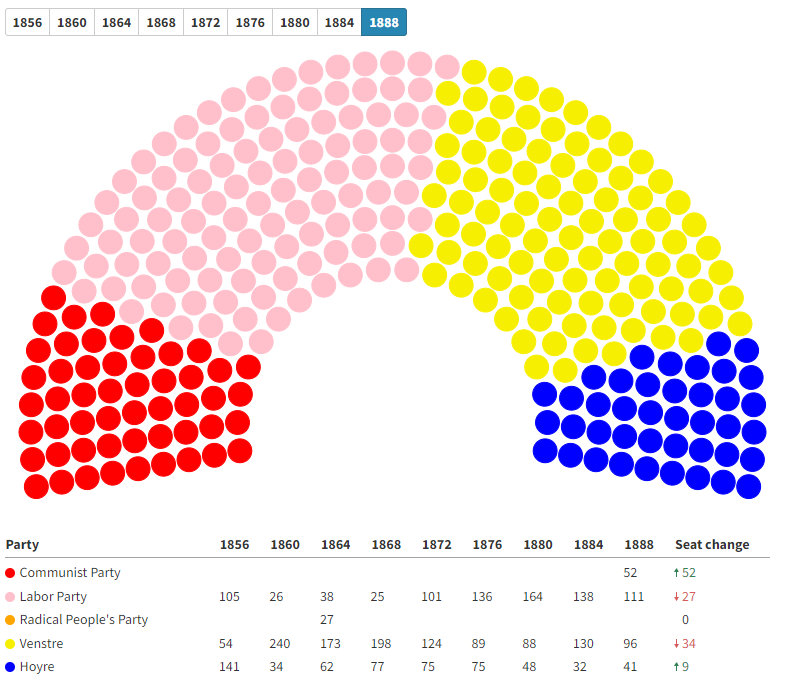Game started on 1.3 as Sweden with the Better Politics Mod.
This AAR is officially finished.
Unlike my previous AAR, this one isn't already finished and in need of proofreading, so if you dislike something about the format, tell me and I'll try to change some things. In particular if you feel like it lacks pictures or there is too much text, tell me, I can adjust. On the other hand, it also means more typos.
Democracy in Scandinavia finds its origins in the political troubles of the late 1840s and early 1850s in Sweden, a period called the Swedish Awakening. It was a time where the Swedish people was clamoring for free elections for everybody. They wanted an end to the absolute power of the king, Oscar I, who was creating more taxes to support his policy of industrialization and expansion. The political protests grew more violent and radical as the government refused to hear them. Some talked of ending the monarchy altogether, a wish which resonated especially easily as there was little allegiance to this new foreign dynasty.
Eventually, political assassinations began to happen, targeting the royal family and people close to it. Oscar I was murdered, a few years after surviving another assassination attempt, and a regency council was formed for his son, Ferdinand-Philippe I. Despite being still a child, the new king was also targeted. A lone assassin shot him in the head. Ferdinand-Philippe survived, as he was hit in the jaw, but he would bore the scar for the rest of his life.
In 1855, the regency council relented and decided to work with the liberals to institute general elections. It was not a popular move and the Church and aristocrats organized an armed uprising in 1856 against the government. It was put down by the army and some worker paramilitary organizations.
There were a lot of debates on the procedure of these elections. A conflicting point was notably the question of whether Denmark, Norway, Iceland and Greenland should be given a voice. Eventually, it was decided that they would receive it as it was an occasion to formally unite Scandinavia into the United Kingdom of Scandinavia. However, the main political power stayed in the hands of the Swedes as the others were not as politically active, had not been involved in the Swedish Awakening for years and far less effort was accorded to ensuring a strong electoral process outside of Sweden. As a notable example of this, the votes in the West Indies only arrived after the official national results were announced and no correction was even attempted (though it is debated whether it would have changed even a single seat). In general, the Swedish supremacy was so important that 79% of the political articles pertaining to the Scandinavian elections of 1856 were published in Sweden. The rest of Scandinavia was given even less political power as the number of seats was decided according to the general results of the election rather than elected locally. Out of the 300 elected members of Parliament in 1856, 238 of them were Swedish.
Three parties were formed for the 1856 elections: Hoyre, the Right, composed of conservatives, Venstre, the Left, composed of liberals, and the Labor Party, formed by trade unions who distrusted the liberals from Venstre. The election was primarily fought over whether a change of regime was necessary. Ferdinand-Philippe was 16 and had a deep hatred for the liberals. It was the fear of Venstre and the Labor Party that he would find a way to abuse his power to put an end to democracy. They wanted a republic. Hoyre defended the king and the monarchy.
The elections were chaotic. There was a lack of resources and care put into the elections outside of Sweden, to the point of a shortage of ballots in Kristiansand in Norway. Even in Sweden, the armed aristocrats uprising controlled the south and though it was put down by the army before the end of the elections, they had succeeded at hampering the electoral process. Furthermore, they refused to form a party and called to their supporters to not vote in order to not give legitimacy to democracy. Some were even censored and repressed by the paramilitary groups associated with the Labor Party. Overall, the 1856 elections would be completely illegitimate by today’s standards and even at the time their legitimacy was questioned, even by some liberals who suggested to push back the elections to 1857 or 1858. It was however not followed by the rest of the Venstre or the Labor Party as they were concerned with having the regency council acts as a provisory government for too long, especially so soon to the king’s majority.
Overall, the elections had a turnout of 27%. Hoyre came first at 47%. Despite the strong activism of the liberals, the majority of the population was still traditionalist. The fact that Ferdinand-Philippe I was a child who had survived an assassination attempt also brought him a lot of sympathy. Venstre tried to avoid criticizing the monarchy too much, but it resulted in the Labor Party taking a lot of their votes. The Labor Party came second with 34,9% and Venstre last with 17,9%. It gave 141 seats for Hoyre, 105 for the Labor Party and 54 for Venstre. Hoyre insisted on keeping power and stayed in government, with the support of the young king, but Venstre and the Labor Party worked together to block all laws proposed by Hoyre and draft the constitution for a new regime.
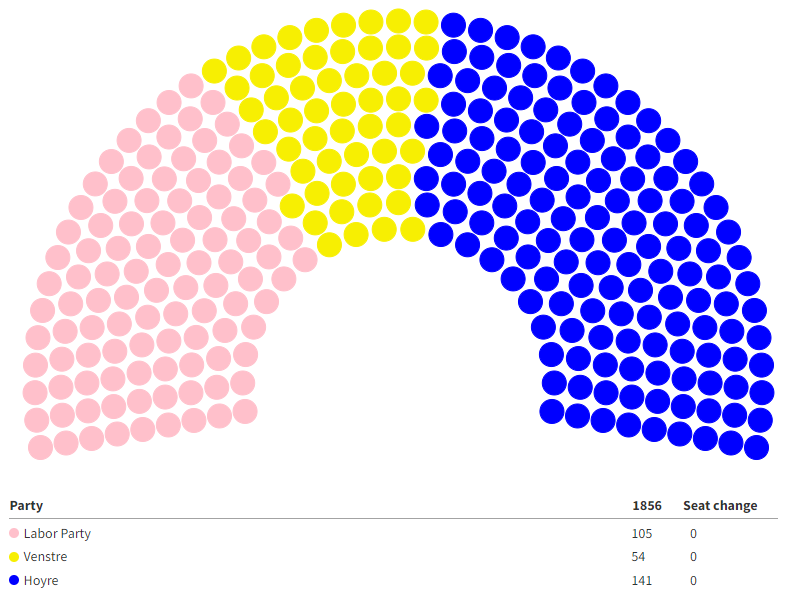
This AAR is officially finished.
1856 Elections
Democracy in Scandinavia finds its origins in the political troubles of the late 1840s and early 1850s in Sweden, a period called the Swedish Awakening. It was a time where the Swedish people was clamoring for free elections for everybody. They wanted an end to the absolute power of the king, Oscar I, who was creating more taxes to support his policy of industrialization and expansion. The political protests grew more violent and radical as the government refused to hear them. Some talked of ending the monarchy altogether, a wish which resonated especially easily as there was little allegiance to this new foreign dynasty.
Eventually, political assassinations began to happen, targeting the royal family and people close to it. Oscar I was murdered, a few years after surviving another assassination attempt, and a regency council was formed for his son, Ferdinand-Philippe I. Despite being still a child, the new king was also targeted. A lone assassin shot him in the head. Ferdinand-Philippe survived, as he was hit in the jaw, but he would bore the scar for the rest of his life.
In 1855, the regency council relented and decided to work with the liberals to institute general elections. It was not a popular move and the Church and aristocrats organized an armed uprising in 1856 against the government. It was put down by the army and some worker paramilitary organizations.
There were a lot of debates on the procedure of these elections. A conflicting point was notably the question of whether Denmark, Norway, Iceland and Greenland should be given a voice. Eventually, it was decided that they would receive it as it was an occasion to formally unite Scandinavia into the United Kingdom of Scandinavia. However, the main political power stayed in the hands of the Swedes as the others were not as politically active, had not been involved in the Swedish Awakening for years and far less effort was accorded to ensuring a strong electoral process outside of Sweden. As a notable example of this, the votes in the West Indies only arrived after the official national results were announced and no correction was even attempted (though it is debated whether it would have changed even a single seat). In general, the Swedish supremacy was so important that 79% of the political articles pertaining to the Scandinavian elections of 1856 were published in Sweden. The rest of Scandinavia was given even less political power as the number of seats was decided according to the general results of the election rather than elected locally. Out of the 300 elected members of Parliament in 1856, 238 of them were Swedish.
Three parties were formed for the 1856 elections: Hoyre, the Right, composed of conservatives, Venstre, the Left, composed of liberals, and the Labor Party, formed by trade unions who distrusted the liberals from Venstre. The election was primarily fought over whether a change of regime was necessary. Ferdinand-Philippe was 16 and had a deep hatred for the liberals. It was the fear of Venstre and the Labor Party that he would find a way to abuse his power to put an end to democracy. They wanted a republic. Hoyre defended the king and the monarchy.
The elections were chaotic. There was a lack of resources and care put into the elections outside of Sweden, to the point of a shortage of ballots in Kristiansand in Norway. Even in Sweden, the armed aristocrats uprising controlled the south and though it was put down by the army before the end of the elections, they had succeeded at hampering the electoral process. Furthermore, they refused to form a party and called to their supporters to not vote in order to not give legitimacy to democracy. Some were even censored and repressed by the paramilitary groups associated with the Labor Party. Overall, the 1856 elections would be completely illegitimate by today’s standards and even at the time their legitimacy was questioned, even by some liberals who suggested to push back the elections to 1857 or 1858. It was however not followed by the rest of the Venstre or the Labor Party as they were concerned with having the regency council acts as a provisory government for too long, especially so soon to the king’s majority.
Overall, the elections had a turnout of 27%. Hoyre came first at 47%. Despite the strong activism of the liberals, the majority of the population was still traditionalist. The fact that Ferdinand-Philippe I was a child who had survived an assassination attempt also brought him a lot of sympathy. Venstre tried to avoid criticizing the monarchy too much, but it resulted in the Labor Party taking a lot of their votes. The Labor Party came second with 34,9% and Venstre last with 17,9%. It gave 141 seats for Hoyre, 105 for the Labor Party and 54 for Venstre. Hoyre insisted on keeping power and stayed in government, with the support of the young king, but Venstre and the Labor Party worked together to block all laws proposed by Hoyre and draft the constitution for a new regime.

Last edited:
- 1


